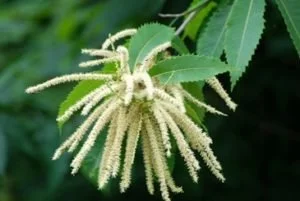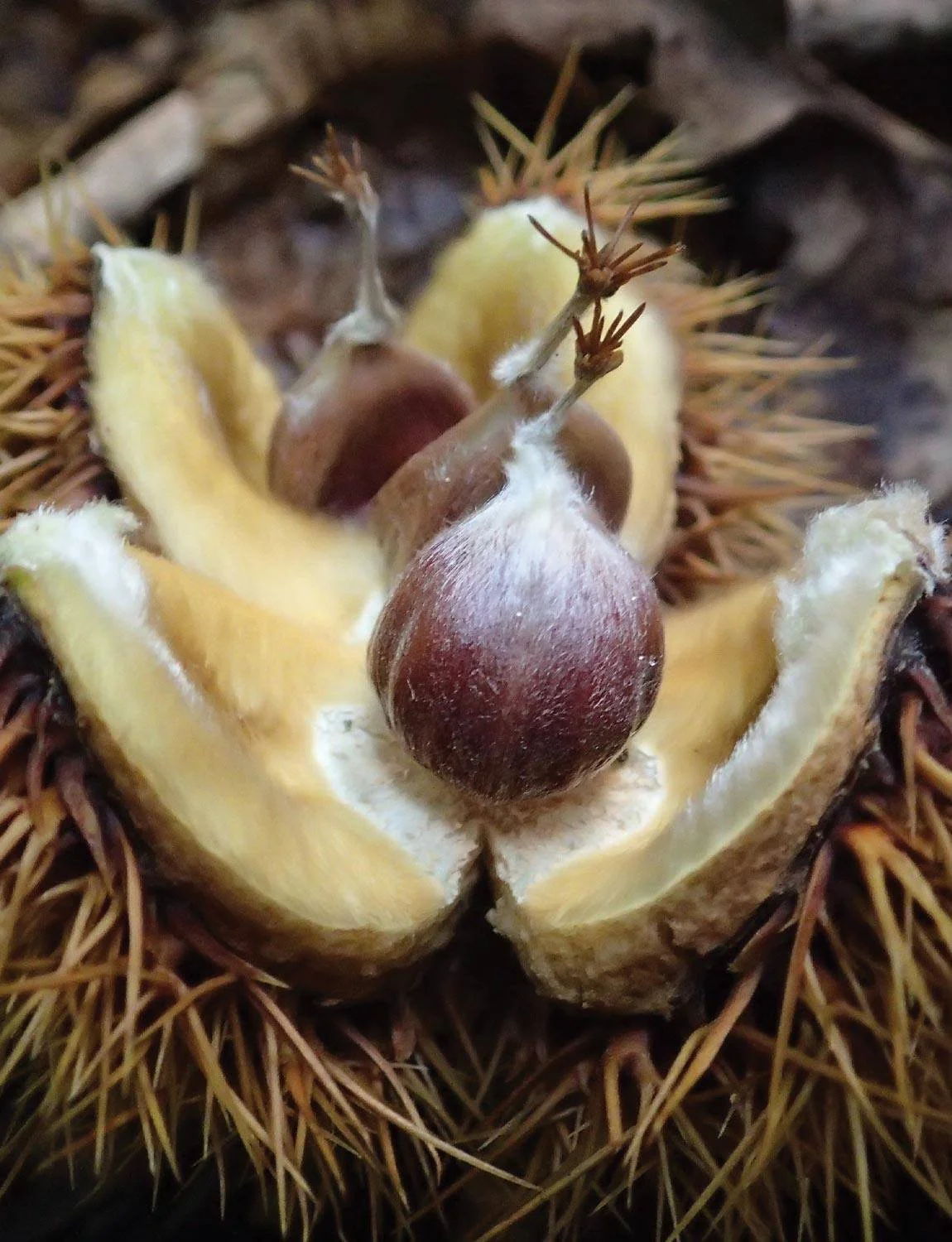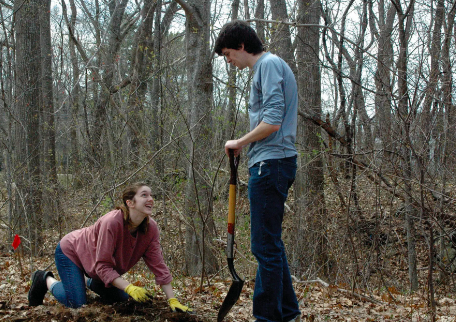The Mighty American Chestnut!
The Comeback Story of the American Chestnut: A Permaculture Powerhouse
The American chestnut (Castanea dentata) is a majestic tree with a rich history, incredible benefits, and a remarkable comeback story. Once a dominant species in Eastern US forests, this giant mama can grow up to 100 feet tall and live for centuries. Its broad canopy and straight trunk make it a stunning addition to any food forest. “Mama fit 15 around it’s stump for supper.”
Stacked Functions
The tree is a highly versatile species with a wide range of valuable uses. Its nuts are a nutritious food source(!), rich in carbs, fiber, protein, and antioxidants - roasted, boiled, or ground into flour. The wood is also highly prized for its durability and resistance to rot, making it ideal for outdoor construction, furniture making, etc. Additionally, the tree's leaves and bark have been used in traditional medicine as well as fodder for various ruminants. In some perm. designs, the chestnut (not American, but, Asian) tree plays a vital role. It serves as a keystone species, providing habitat and food for diverse wildlife, and supports biodiversity through its broad canopy and nutrient-rich nuts. The tree's deep taproots improve soil health, prevent erosion, and fix nitrogen, enhancing soil fertility. These characteristics make it an excellent choice for food forests, agroforestry, and restoration projects.
A Keystone Species
Historically, American chestnuts covered approximately 200 million acres from Maine to Georgia. The nuts were a staple food for wildlife, including deer, turkeys, and bears, while the trees themselves provided habitat for numerous bird species and insects.
Her Decline
Tragically, the American chestnut was nearly wiped out in the early 20th century by a devastating fungal blight known as Cryphonectria parasitica.
Introduced accidentally from Asia in the late 1800s via imported Japanese chestnut trees at The New York Zoological Garden (now the Bronx Zoo) in New York City, the chestnut blight fungus spread rapidly, killing an estimated 4 billion American chestnut trees – virtually the entire population – by the 50s.
This absolute ecological disaster was intricately linked to the demise of another iconic species: the passenger pigeon. Once numbering in the billions, passenger pigeons relied heavily on American chestnuts as a primary food source while the tree relied on its nitrogen and phosphorus-rich droppings. More over it was a highly prized and easily harvested bird for amature hunters. One writer put, “…there were so many for us to shoot, it was as if they darkened the sky.” As the chestnut blight killed forests, passenger pigeon populations declined dramatically, ultimately driven to extinction by 1914 also due to loss of food source, habitat destruction, and their overhunting.
The Renewal!
Several organizations and scientists are working tirelessly to restore the American chestnut tree. The American Chestnut Foundation is leading breeding programs to create blight-resistant hybrid trees by crossing American chestnuts with resistant Chinese chestnuts. Additionally, genetic engineering techniques are being used to introduce blight-resistant genes into American chestnut trees. Thousands of hybrid trees have been planted in forests and research sites to test their adaptability and resistance.
Complementary efforts include seed banking to preserve genetic material, forest restoration projects to reintroduce American chestnuts into ecosystems, and research into naturally blight-resistant trees. Community engagement and education initiatives are also underway to raise awareness about the American chestnut's plight and involve the public in restoration efforts. These multifaceted approaches aim to revive this iconic species and restore balance to Eastern US forests.
Read more: American Chestnut Foundation
















